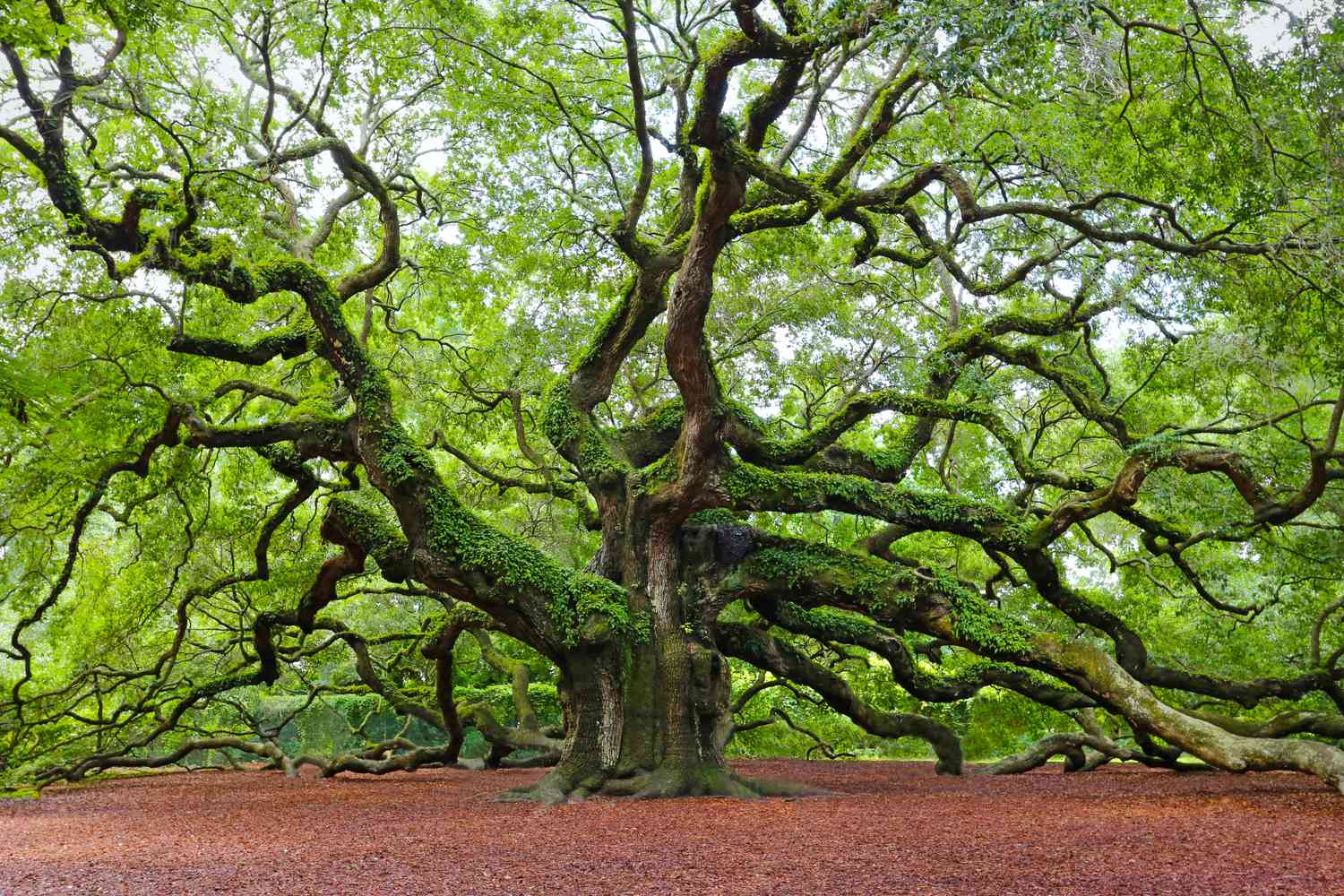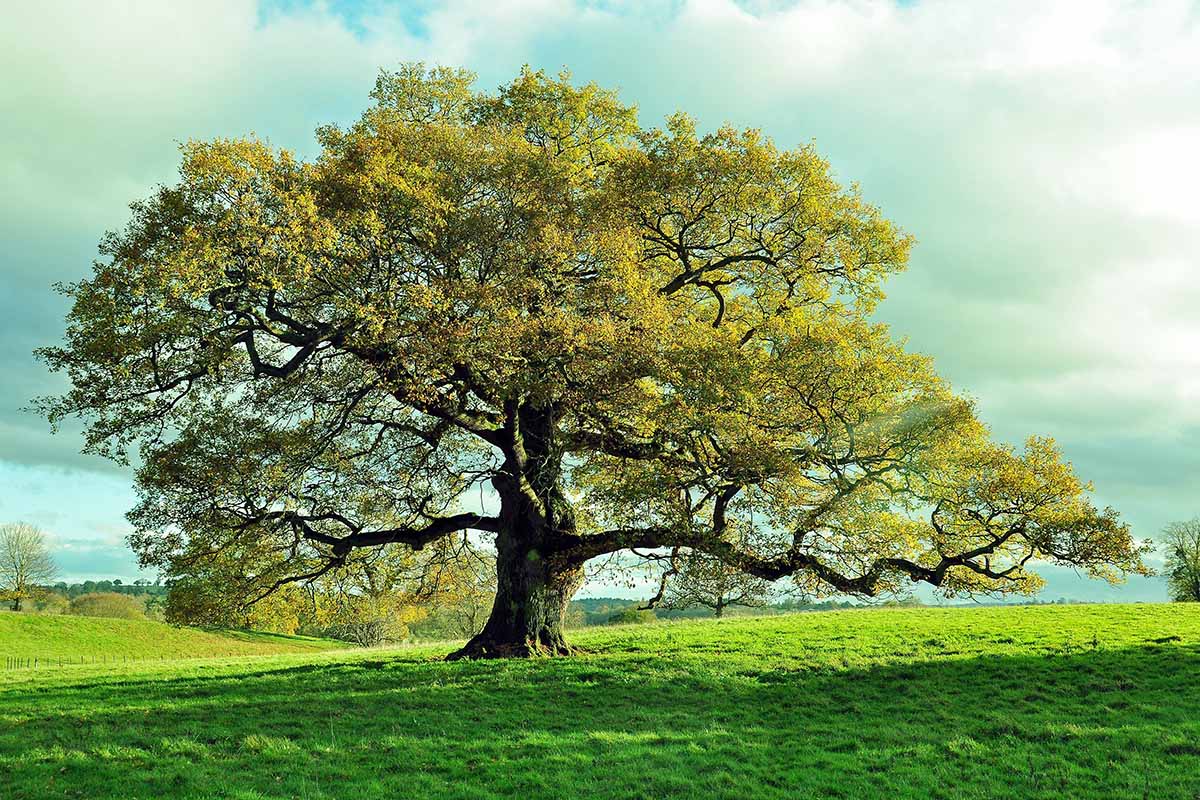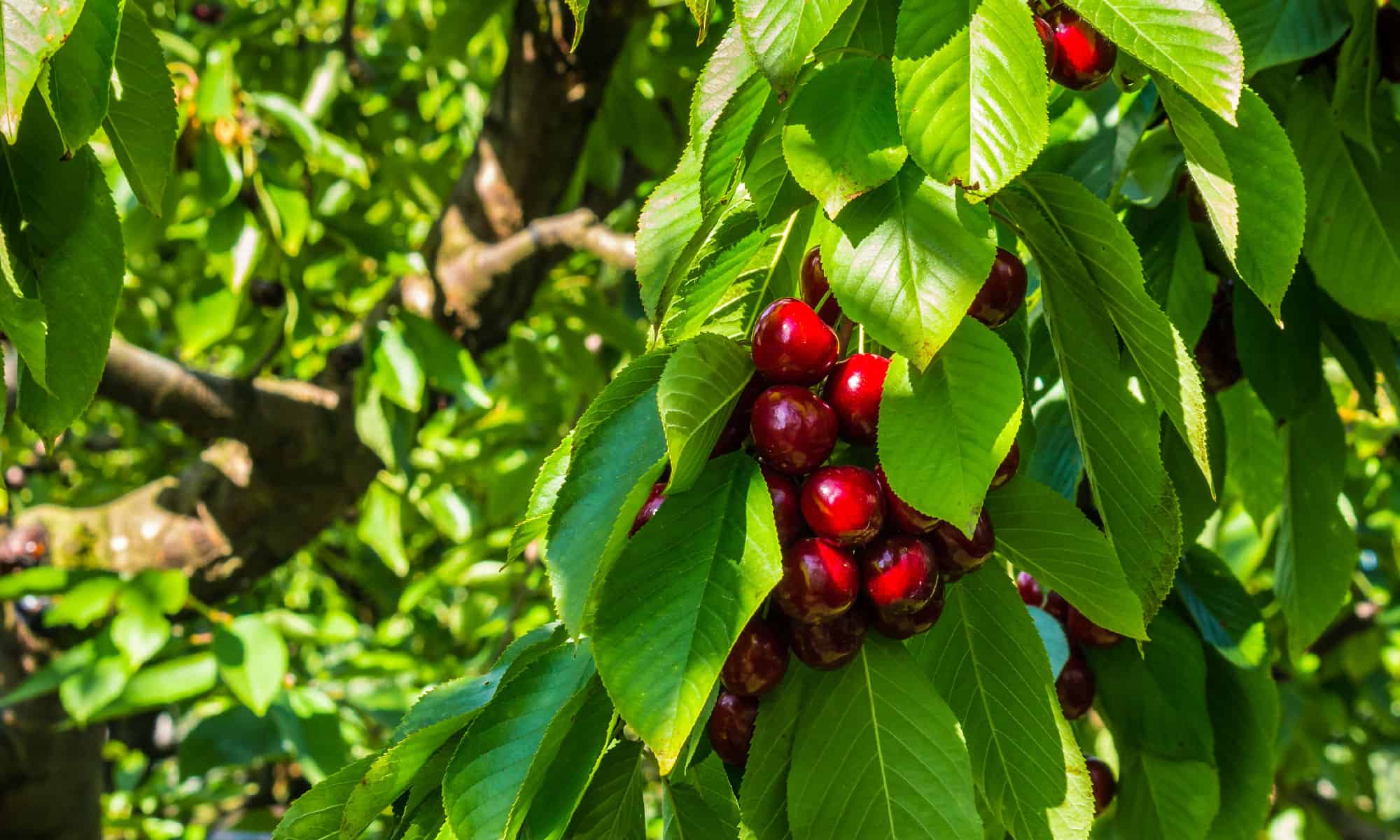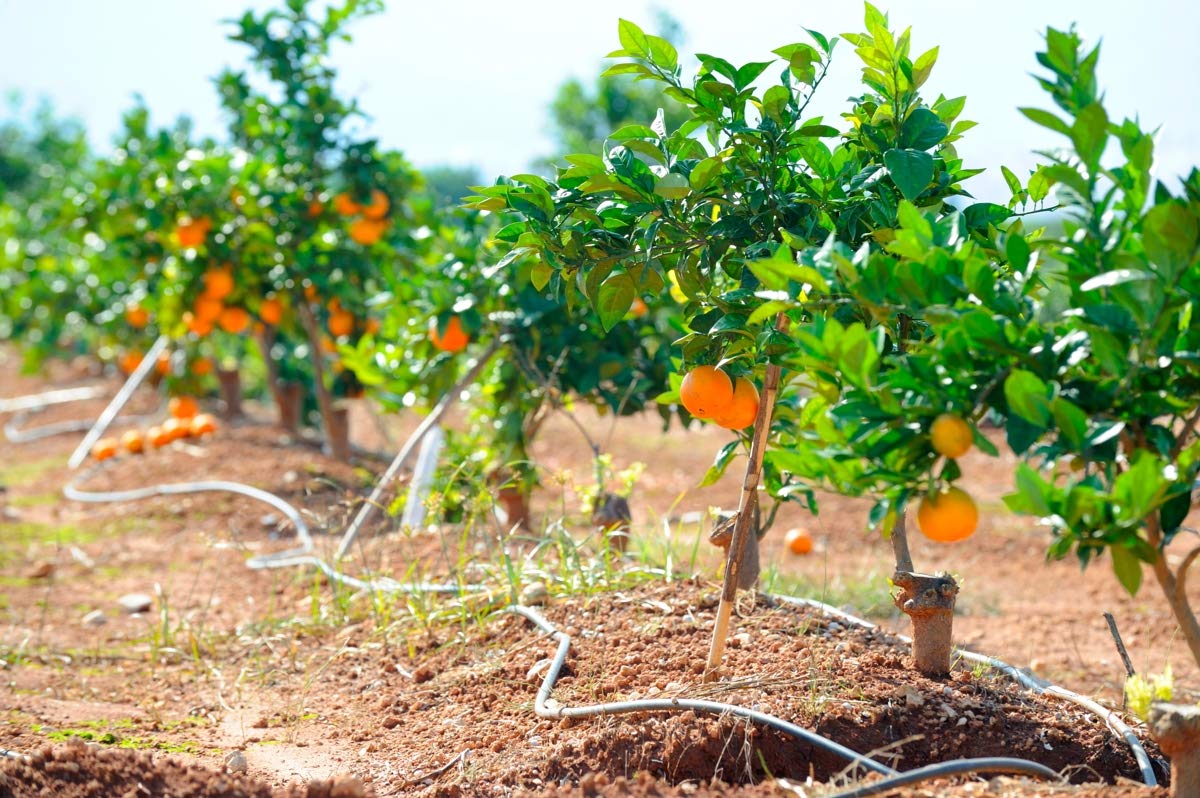Home>Gardening Techniques>Plant Care>How Long Does It Take For Oak Trees To Grow


Plant Care
How Long Does It Take For Oak Trees To Grow
Modified: February 10, 2024
Discover the timeline for oak tree growth and learn valuable plant care tips to ensure healthy and sustainable growth.
(Many of the links in this article redirect to a specific reviewed product. Your purchase of these products through affiliate links helps to generate commission for Chicagolandgardening.com, at no extra cost. Learn more)
Table of Contents
Introduction
Welcome to the world of oak trees, majestic and resilient plants that have captivated humans for centuries. These iconic trees are known for their grandeur, longevity, and ecological significance. Whether you’re a nature enthusiast, a gardener, or just curious about plant life, understanding the growth process of oak trees is fascinating and rewarding.
Oak trees belong to the genus Quercus and are native to diverse regions around the world. They are known for their stately appearance, with large, spreading branches and distinctive lobed leaves. The growth of an oak tree is a fascinating journey that starts with germination and continues throughout its lifespan, which can span several generations.
There are several factors that influence the growth of oak trees. Understanding these factors is essential for successful cultivation and care. From environmental conditions to soil quality, there are numerous elements that can affect the growth rate and health of oak trees. By taking these factors into account and implementing proper care techniques, you can help your oak trees thrive and flourish.
In this article, we will explore the various factors that influence the growth of oak trees, including germination and early growth, vegetative growth, environmental influences, soil quality, pruning and training, as well as the factors that can slow down growth, such as diseases and pests. By the end, you will have a comprehensive understanding of what it takes for oak trees to grow and how to ensure their long-term success.
Factors Affecting Oak Tree Growth
The growth of oak trees is influenced by a combination of internal and external factors. Understanding these factors is crucial for providing the optimal conditions needed for healthy growth and development. Let’s explore some of the key factors that affect the growth of oak trees.
- Genetics: The genetic makeup of an oak tree plays a significant role in its growth characteristics. Different oak species have varying growth rates, sizes, and environmental preferences. It is important to select oak tree varieties that are well-suited to your climate and soil conditions to ensure successful growth.
- Climate: Oak trees have a wide range of climatic adaptations, but each species has its own preferences. Factors such as temperature, rainfall, and sunlight influence the growth and health of oak trees. Some oak species thrive in cooler regions with abundant rainfall, while others are better suited to arid or tropical climates. Understanding your local climate and choosing oak tree varieties accordingly will optimize growth.
- Soil Conditions: The composition and quality of the soil greatly impact oak tree growth. Oak trees prefer well-draining soil that is rich in organic matter. Soil pH, texture, and nutrient content are also important factors to consider. Conducting a soil test and amending the soil as necessary will provide the ideal conditions for oak tree growth.
- Water: Adequate water is essential for the growth and survival of oak trees. While oak trees are generally quite drought-tolerant once established, the early stages of growth require consistent moisture. Ensuring proper irrigation and watering during dry periods will support healthy and vigorous growth.
- Light: Oak trees are typically tolerant of various light levels, but they do require a certain amount of sunlight for optimal growth. Most oak species prefer full sun to partial shade. Insufficient light can lead to weak growth and susceptibility to diseases and pests. Planting oak trees in locations that receive adequate sunlight will promote healthy growth.
- Competition and Space: Oak trees have expansive root systems and require sufficient space for optimal growth. Competition from nearby plants can hinder their growth and access to nutrients. Providing enough space and minimizing competition from other plants will allow oak trees to grow and develop vigorously.
By considering these factors and implementing appropriate care practices, you can create the ideal conditions for oak tree growth. From selecting the right species for your region to providing proper soil, water, and sunlight, each factor plays a vital role in the successful growth and development of oak trees.
Germination and Early Growth
Germination is the first stage in the life cycle of an oak tree. It is the process by which a seed transforms into a young seedling. The success of germination and early growth greatly impacts the long-term health and development of the oak tree.
The germination of an oak tree seed is influenced by several factors, including temperature, moisture, and light. Most oak tree species have a period of stratification, which is a period of cold temperature required for breaking seed dormancy. This can be achieved naturally through exposure to winter conditions or artificially through a process called cold stratification.
Once the seed has undergone stratification and the conditions are favorable, it will begin to germinate. The first signs of germination include the emergence of the radicle, which is the embryonic root, and the emergence of the cotyledon, which is the embryonic leaf. Following this initial growth, the young seedling will continue to develop both above and below the ground.
During the early growth stage, it is important to provide the young oak tree with proper care and favorable conditions. This includes adequate water, sunlight, and protection from extreme weather conditions and pests. Ensuring a moist but well-drained soil is crucial, as excessive moisture can lead to root rot and stunted growth.
Applying a layer of organic mulch around the base of the seedling can help retain moisture, regulate soil temperature, and suppress weed growth. It also provides beneficial organic matter as it decomposes, improving soil fertility over time.
As the seedling grows, it will begin to develop its first true leaves and expand its root system. Regular watering is essential during this stage to promote healthy root development and overall growth. However, it is important to avoid overwatering, as this can lead to root suffocation and disease.
Proper light exposure is also crucial for early growth. Providing the seedling with adequate sunlight or supplemental grow lights will help stimulate photosynthesis and promote healthy leaf and stem development. If growing indoors, it is important to monitor the duration and intensity of light to mimic natural outdoor conditions.
By providing optimal conditions and care during germination and early growth, you are setting the stage for the oak tree’s long-term success. With careful attention to water, sunlight, and protection, the young seedling will establish strong roots and develop into a healthy and resilient oak tree.
Vegetative Growth
Once the oak tree seedling has successfully established itself during the initial growth phase, it enters a period of vegetative growth. This stage is characterized by the development and expansion of the tree’s aboveground structures, including leaves, branches, and stems.
During vegetative growth, the oak tree focuses on increasing its photosynthetic capacity and building a strong framework for future growth. Leaves play a vital role in this process, as they are the primary site for photosynthesis, the process by which plants convert sunlight into energy. The more leaves an oak tree has, the more energy it can produce and allocate towards growth.
As the tree continues to grow, branches will form and extend outward. These branches provide structural support for the tree and serve as additional sites for photosynthesis. It is important to note that the oak tree’s growth pattern may vary depending on the species. Some species have a more upright, narrow growth habit, while others have a spreading, broad canopy.
Pruning can play a crucial role in shaping the vegetative growth of oak trees. By selectively removing certain branches, you can guide the development of a desired growth pattern, improve structural integrity, and enhance the overall aesthetic appeal of the tree. However, it is important to follow proper pruning techniques and avoid excessive or improper pruning that may harm the tree.
Throughout the vegetative growth stage, it is essential to provide proper care to support healthy growth. Regular watering, especially during dry periods, is crucial for maintaining adequate moisture levels in the soil. Mulching around the base of the tree helps retain moisture and protect the root system from temperature fluctuations.
Applying a balanced fertilizer specifically formulated for trees can provide essential nutrients that may be lacking in the soil. It is important to follow the instructions and avoid over-fertilizing, as excessive nitrogen can promote excessive leaf growth but hinder overall tree health.
Additionally, monitoring for pests and diseases is crucial during the vegetative growth stage. Common pests of oak trees include aphids, caterpillars, and borers, while diseases such as oak wilt and powdery mildew can affect foliage health. Regular inspection and timely intervention with appropriate treatments can prevent or mitigate these issues.
By providing sufficient water, proper pruning, and attentive care, you can support the vigorous vegetative growth of oak trees. This stage sets the foundation for the tree’s long-term success, as it prepares the tree to mature and produce acorns, thereby contributing to the regeneration of this remarkable species.
Environmental Influences
The growth and development of oak trees are significantly influenced by various environmental factors. These factors play a crucial role in shaping the tree’s overall health, growth rate, and adaptability. Understanding and managing these environmental influences are essential for maintaining healthy and thriving oak trees.
One of the primary environmental factors that impact oak tree growth is temperature. Different oak species have varying temperature requirements, with some being more cold-hardy and others more heat-tolerant. Extreme temperatures, either excessively hot or cold, can stress the trees and hinder growth. It is important to select oak tree varieties that are well-suited to the local climate to ensure optimal growth.
Another important environmental factor is moisture. Oak trees generally prefer well-drained soil but require regular watering, especially during dry periods. Insufficient water availability can result in stunted growth and even death, while excessive moisture can lead to root rot and other diseases. Monitoring soil moisture levels and providing adequate irrigation is essential to maintain optimal growth conditions.
Wind is another environmental factor that can have a significant impact on oak trees. Strong winds can damage branches, uproot trees, and hinder overall growth. Planting oak trees in areas that provide some protection from prevailing winds, such as near buildings or other trees, can help mitigate wind-related damage and promote healthy growth.
Light availability is also crucial for oak tree growth. While oak trees are typically adaptable to a range of light conditions, they still require a certain amount of sunlight for photosynthesis and growth. Insufficient light can result in weak growth, sparse foliage, and poor overall health. Ensuring that oak trees receive adequate exposure to sunlight or supplemental lighting in indoor settings will support optimal growth.
Additionally, air pollution and environmental pollutants can negatively affect oak tree growth. Pollutants such as sulfur dioxide, nitrogen dioxide, ozone, and particulate matter can damage leaf tissue, disrupt photosynthesis, and hinder overall plant health. Planting oak trees in areas with low pollution levels and implementing measures to reduce pollution exposure can help mitigate these harmful effects.
It is important to note that the specific environmental influences on oak tree growth may vary depending on the region and local conditions. Conducting thorough research on the particular oak species and understanding the environmental requirements will help ensure successful growth and longevity of the trees.
By considering and managing these environmental influences, you can create a favorable growing environment for oak trees. Providing appropriate temperature ranges, sufficient water, optimal light exposure, and protection from wind and pollutants will support the long-term health and growth of these magnificent trees.
Effects of Soil Quality and Type
The quality and type of soil play a crucial role in determining the growth and overall health of oak trees. Different soil characteristics directly impact the availability of essential nutrients, water retention, and root development. Understanding the effects of soil quality and type is essential for successful oak tree cultivation.
Soil texture is one of the key factors that influence oak tree growth. The three main types of soil texture are sand, silt, and clay. Sandy soils have larger particles and drain quickly, resulting in lower water and nutrient retention. Clay soils, on the other hand, have smaller particles and tend to retain water, which can lead to poor drainage. Loam, a combination of the different soil textures, is considered ideal for oak trees as it provides a balance of water and nutrient retention.
Soil fertility is another important aspect of soil quality. Fertile soil contains an adequate supply of essential nutrients, such as nitrogen, phosphorus, and potassium, as well as micronutrients. These nutrients are critical for healthy oak tree growth and development. Conducting a soil test can help determine the nutrient levels in the soil and guide appropriate fertilizer application to enhance soil fertility.
Soil pH, which measures the acidity or alkalinity of the soil, also affects oak tree growth. Most oak species prefer slightly acidic to neutral soil with a pH range of 6.0 to 7.5. Soil pH influences nutrient availability, as certain nutrients become less accessible to plants in highly acidic or alkaline conditions. Amending the soil with organic matter or using appropriate soil amendments can help adjust the pH and create optimal conditions for oak tree growth.
In addition to soil texture and fertility, soil drainage is crucial for oak tree growth. Excessively wet or poorly drained soil can lead to root rot and suffocation, inhibiting the tree’s ability to take up water and nutrients. On the other hand, excessively dry soil can result in drought stress and hinder growth. Ensuring adequate drainage through proper grading, amending the soil with organic matter, and avoiding overwatering will help maintain optimal soil conditions for oak trees.
The overall health and condition of the soil ecosystem also contribute to oak tree growth. Beneficial soil organisms, such as earthworms and beneficial bacteria, help break down organic matter and release nutrients for plants. Maintaining a healthy soil ecosystem through organic practices, avoiding harmful pesticides, and incorporating organic matter into the soil can improve soil structure and provide a favorable environment for oak tree growth.
It is important to note that different oak species may have specific soil preferences. Some species are more adaptable and can tolerate a wider range of soil conditions, while others are more specific in their requirements. Researching the soil preferences of the particular oak species and selecting appropriate varieties for your soil type will optimize growth and ensure long-term success.
By considering the effects of soil quality and type, and implementing appropriate soil management techniques, you can create an optimal growing environment for oak trees. Providing proper soil drainage, adjusting soil pH, maintaining soil fertility, and promoting a healthy soil ecosystem will support vibrant oak tree growth and establishment.
Pruning and Training
Pruning is an essential practice in the care and maintenance of oak trees. It involves the selective removal of branches and foliage to improve tree structure, enhance aesthetics, and promote overall tree health. Proper pruning techniques can help shape the tree, prevent structural issues, and stimulate new growth.
Pruning oak trees is typically done during the dormant season when the tree is not actively growing. This allows for easier identification of problematic branches and minimizes the stress on the tree. However, minor pruning, such as the removal of damaged or dead branches, can be done at any time of the year.
The main goals of pruning oak trees include:
- Structural Integrity: Pruning helps develop a strong framework by removing weak, crossing, or rubbing branches. This improves the overall stability of the tree and reduces the risk of branch failure, especially during storms or high winds.
- Aesthetic Appeal: Pruning can enhance the natural form and aesthetics of oak trees, creating a balanced and visually pleasing appearance. Removing dead or diseased branches and maintaining a well-defined canopy can greatly improve the overall beauty of the tree.
- Air Circulation and Sunlight Penetration: Thinning out the canopy through selective pruning allows for better air circulation and sunlight penetration. This helps reduce the risk of fungal diseases and encourages the growth of inner branches, resulting in a healthier and more vigorous tree.
- Size Control: Pruning can help control the size of oak trees, preventing them from outgrowing the available space. This is particularly beneficial when growing oak trees in urban or residential areas where space may be limited.
When pruning oak trees, it is important to follow specific guidelines to avoid potential harm or stress to the tree. These guidelines include:
- Using clean and sharp pruning tools to make clean cuts and minimize damage to the tree.
- Pruning just outside the branch collar, the swollen area where the branch joins the trunk or another branch, to promote proper healing.
- Avoiding the use of pruning paints or sealants as they can hinder, rather than promote, the natural healing process.
- Not removing more than 20-25% of the tree’s branches in a single pruning session to prevent excessive stress.
Training young oak trees during the early years is also an important aspect of pruning. This involves guiding the growth of the tree to develop a strong central leader or main trunk and well-spaced scaffold branches. Proper training can help create a stable and well-structured tree as it matures.
It is important to consult pruning guidelines specific to the oak species you are growing, as certain species may have unique growth habits or requirements. Additionally, if you are unsure about the best pruning approach for your oak tree, it is advisable to seek the guidance of a certified arborist or tree care professional.
By practicing proper pruning and training techniques, you can ensure the structural integrity, aesthetics, and overall health of your oak trees. Regular pruning will promote vigorous growth, reduce the risk of tree damage, and contribute to the long-term success of these magnificent trees.
Factors That Slow Oak Tree Growth
While oak trees are generally resilient and adaptable, there are several factors that can slow down their growth and development. Identifying and addressing these factors is crucial for maintaining healthy and thriving oak trees. Let’s explore some of the common factors that can hinder oak tree growth.
Poor Soil Conditions: Soil quality and fertility play a significant role in oak tree growth. Inadequate soil drainage or overly compacted soil can suffocate the roots, leading to poor nutrient uptake and stunted growth. Additionally, nutrient deficiencies or imbalances can limit the tree’s ability to reach its full growth potential.
Insufficient Water: Oak trees require regular and consistent watering, especially during periods of drought or hot weather. Inadequate water supply can lead to water stress, reduced photosynthesis, and overall growth decline. Additionally, overwatering can suffocate the roots and promote root rot, further hindering growth.
Shade Competition: Oak trees prefer sunlight and can struggle to thrive in heavily shaded areas. Competition from nearby trees or structures can limit the amount of available sunlight, resulting in weak growth and sparse foliage. Pruning surrounding vegetation to increase light penetration can help alleviate this issue.
Poor Pruning Practices: Improper pruning techniques or excessive pruning can have negative effects on oak tree growth. Removing too many branches or making incorrect cuts can stress the tree and disrupt its natural growth patterns. It is important to follow proper pruning guidelines and only remove branches that are necessary for the tree’s health and structure.
Inadequate Nutrient Supply: Oak trees require a balanced supply of nutrients for optimal growth. Nutrient deficiencies, such as nitrogen, phosphorus, or potassium, can limit growth and weaken the overall health of the tree. Conducting regular soil tests and providing appropriate fertilization can help ensure the tree has access to the essential nutrients it needs.
Diseases and Pests: Several diseases and pests can negatively impact oak tree growth. Oak wilt, powdery mildew, anthracnose, and various pests such as aphids, caterpillars, and borers can cause damage to the tree’s leaves, branches, and overall health. Regular inspection, timely intervention, and appropriate treatments are essential for preventing or mitigating these issues.
Environmental Stresses: Extreme weather conditions, such as severe drought, frost, or high winds, can pose significant challenges for oak tree growth. These stresses can weaken the tree, inhibit nutrient uptake, and disrupt essential physiological processes. Providing proper care, such as adequate watering, mulching, and protection from harsh weather conditions, can help mitigate these stresses.
Addressing these factors that slow oak tree growth requires a holistic and proactive approach. Providing optimal soil conditions, proper watering, regular pruning, and proactive management of diseases and pests will help create an environment conducive to healthy and vigorous oak tree growth.
Diseases and Pests
Like all plants, oak trees are susceptible to various diseases and pests that can hinder their growth and overall health. Identifying and managing these threats is essential for maintaining thriving oak trees. Let’s explore some common diseases and pests that can affect oak trees.
Oak Wilt: Oak wilt is a deadly disease caused by a fungus that can attack various oak species. It spreads through root grafts between neighboring trees or through sap-feeding beetles. The disease causes wilting of leaves, defoliation, and ultimately, the death of the tree. Prompt detection and intervention, such as removing infected trees and preventing movement of infected wood, are crucial for preventing the spread of oak wilt.
Powdery Mildew: Powdery mildew is a fungal disease that appears as a white, powdery coating on the leaves and stems of oak trees. It thrives in warm and humid conditions. While powdery mildew does not usually cause significant damage, severe infections can lead to leaf distortion, reduced photosynthesis, and overall growth decline. Removing infected plant material and maintaining proper air circulation can help mitigate powdery mildew.
Anthracnose: Anthracnose is a fungal disease that causes necrotic spots on the leaves, twigs, and branches of oak trees. It spreads through splashing water or wind-borne spores. Severe infections can cause defoliation and weaken the tree. Pruning and destroying affected plant material, providing proper sanitation, and applying fungicides when necessary can help manage anthracnose.
Aphids: Aphids are small, sap-feeding insects that can infest oak trees. They suck the sap from leaves, excrete honeydew, and attract other pests and diseases. Severe aphid infestations can cause leaf curling, stunted growth, and reduced vigor. Regular monitoring, physical removal or spraying with insecticidal soaps or horticultural oils can effectively control aphids.
Caterpillars: Caterpillars, such as oak leafrollers and oak leafminers, can feed on the leaves of oak trees, leading to defoliation and reduced growth. They can be controlled through the use of biological control agents or targeted insecticides. Additionally, maintaining a healthy tree through proper care practices can enhance its ability to withstand and recover from caterpillar damage.
Borers: Borers, such as the oak borer and oak twig pruner, can tunnel into the branches and trunks of oak trees, causing damage and weakening the structure. Preventive measures, such as maintaining tree vigor, proper pruning techniques, and timely insecticide application, can help manage borer infestations.
Regular monitoring of oak trees for signs of diseases and pests is essential for early detection and intervention. Maintaining overall tree health through proper care practices, such as watering, fertilizing, and pruning, can support the tree’s natural resistance to such threats. Consultation with arborists or certified professionals may be necessary for accurate diagnosis and appropriate treatment plans.
By implementing proper management practices and timely intervention, you can effectively control diseases and pests, ensuring the health and vitality of your oak trees for many years to come.
Conclusion
In conclusion, understanding the factors that affect the growth and development of oak trees is essential for their successful cultivation and care. From germination and early growth to vegetative growth and environmental influences, each stage of an oak tree’s life presents unique considerations and challenges.
The germination and early growth stage lays the foundation for the tree’s long-term success. Providing optimal conditions, such as proper moisture, sunlight, and protection, will support healthy root development and vigorous growth.
During vegetative growth, attention to pruning, watering, and adequate light is crucial. Proper pruning techniques can shape the tree’s structure, improve aesthetics, and stimulate new growth. Consistent watering and nutrient management ensure the tree has the resources it needs for healthy development.
Environmental influences, including temperature, moisture, and light, directly impact oak tree growth. Understanding and managing these influences is essential for maintaining healthy and thriving trees. Providing suitable soil conditions, a favorable climate, and adequate light exposure will promote optimal growth.
Soil quality and type play a significant role in oak tree growth. Loam soil with proper drainage and fertility is ideal. Adjusting soil pH, improving soil structure, and maintaining a healthy soil ecosystem are crucial for supporting the tree’s nutrient uptake and growth.
Proper pruning and training techniques guide the growth of oak trees, promote structural integrity, and enhance aesthetics. Timely pruning during the dormant season and training young trees to develop a strong central leader and well-spaced branches contribute to long-term health and stability.
Several factors can slow down oak tree growth, including poor soil conditions, inadequate water supply, shade competition, poor pruning practices, nutrient deficiencies, diseases, pests, and environmental stresses. Identifying and addressing these factors is essential for maintaining healthy and thriving oak trees.
By understanding the unique needs of oak trees and implementing appropriate care practices, you can ensure the long-term success and vitality of these majestic trees. With proper attention to their growth requirements, oak trees will continue to grace our landscapes with beauty, provide valuable ecosystem services, and stand as a testament to the enduring power of nature.










